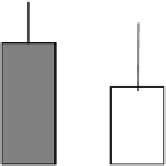Agriculture Reference
In-Depth Information
A
TOTA
L
COLIFORMS
Control
Earthworms
0 10 20
time
(
days
)
B
C
GAPs
CAPs
TOTAL COLIFORMS
TOTAL COLIFORMS
WASTE
CAST
WASTE
WASTE +
CAST
CAST
Time
(
)
FIGURE 20.7
A case
example of
different strategies on vermicomposting research: (A) classical approach;
split approach in (B) gut-associated processes (GAPs) and (C) cast-associated processes (CAPs).
nutrients to plants (Gilot 1997), to enhancement of mycorrhizal infection, to control of plant
parasitic nematode populations, to increased microbial populations, and to biologically active
metabolites such as plant growth regulators (Tomati and Galli 1995; Doube et al. 1997) and humates
(Atiyeh et al. 2002b).
The effects of vermicomposts on the growth of a variety of crops, including cereals, legumes,
vegetables, ornamental and Þowering plants, and trees, have been assessed in the greenhouse and
to a lesser degree in Ýeld crops (Chan and GrifÝths 1988; Edwards and Burrows 1988; Wilson and
Carlile 1989; Mba 1996; Thankamani et al. 1996; BuckerÝeld and Webster 1998; BuckerÝeld et
al. 1999; Nethra et al. 1999; Atiyeh et al. 1999, 2000b,c, 2002a,b) (see
Chapter 18
, this volume).
These investigations have demonstrated consistently that vermicomposts have beneÝcial effects on
plant growth independent of nutrient transformations and availability. Whether vermicomposts are
used as soil additives or as components of horticultural soilless bedding plant container media,
vermicomposts have consistently improved seed germination, enhanced seedling growth and devel-
opment, and increased plant productivity and yields much more than would be possible from the
mere conversion of mineral nutrients into more plant-available forms. The greatest plant growth
responses and yields have occurred constantly when vermicomposts constituted a relatively small
proportion (10 to 40%) of the total volume of the plant growth medium in which they are incor-
porated. Usually, greater proportions of vermicomposts substituted in growth media have not
increased plant growth as much as smaller proportions (Atiyeh et al. 1999, 2002a,b). This could


















































































